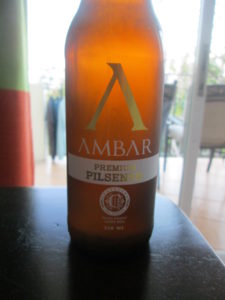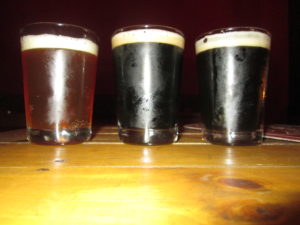I know that the beer scene in Costa Rica is not my beat here at onbeer. REALLY not my beat. I should be telling you about the latest new brewery in Manitoba or that cool beer spot in Calgary.
But I can’t get my mind off of Costa Rica (likely for good reason having just returned from there to sub-zero temperatures at home). I find myself wondering if there are any parallels or takeaways for the prairie beer lover. I think there are. I find some fascinating observations that could be interesting even if you have never been to Costa Rica.
As I mentioned in my last post (you can read it here), the Costa Rican craft beer scene has emerged out of literally nowhere in the last couple of years. 45 breweries exist in this small country, up from 4 three years ago. This explosion is the first key observation.
It is driven, in large part, by ex-pats and the consumer demand of tourists, as well as a stable, relatively affluent middle class (by Central American standards). Plus the number of breweries is misleading – most are very, very tiny. With some digging I found that the oldest craft brewery – Costa Rica’s Craft Brewing Company (which opened in 2010) – today produces about 2,200 HL. That is a fraction of some of our established craft breweries and no larger than some of the young upstarts. Only one other brewery, Treintaycinco Fábrica de Cervezas, comes close to that. Most, it seems, produce a couple to a few hundred hectolitres at best.
Compare that to the domestic production of the one large brewery corporation, Florida Bebidas (a subsidiary of Florida Ice and Farm Company, a huge Costa Rican corporation that – interestingly – owns North American Breweries which owns Pyramid and Magic Hat as well as holds the US rights to Labatt) produces about 1.5 million HL per year. Costa Rican craft beer amounts to much less than 0.5% of the market.
Speaking of Florida Bebidas, they recently launched a pseudo-craft subsidiary, called La Micro Brewing Company, to put out craft-y looking beer. That strategy sound familiar? I even fell for it accidentally one day, picking up a bottle of what I thought was a real craft beer. I can safely report that it tasted like similar pseudo-craft offerings in Canada.
Florida Bebidas is ubiquitous in the country, although a casual observer wouldn’t know it. They market a handful of brand names, including Imperial, Pilsen, Bavaria and others. Even if you order a classic European Heineken, they produce and market it for the Costa Rican market. Does that also sound familiar?
The near monopoly of Florida Bebidas is rather staggering. While imports have jumped in recent years, this one company still sells more than 90% of all beer sold in Costa Rica. It is a daunting challenge for a small upstart. I think there are a few parallels to what is happening on the prairies.
I also think that Costa Rica’s rapid entry into the craft world is a double-edged sword. The flurry of new entrants is exciting at first, but immediately my mind turns to two questions: sustainability and quality. Not all of these new breweries is going to have figured out how to make good beer. Where did 40+ brewmasters suddenly come from? While imports of ingredients has increased, I can imagine that getting fresh hops and quality malt continues to be a challenge. And how many of these new breweries have the capital, cash flow, know-how and positioning to survive in what is still a very hostile environment? I worry such a rapid growth will be followed by a sizeable reduction in the near future as small operations find selling beer harder than they thought.
This is not dissimilar (although a bit more extreme) than what we are seeing in Calgary or Winnipeg (or Nova Scotia). Lots of new breweries opening up in a relatively short timeframe. Maybe most will find their niche and thrive, but I fear many will find the slog harder than anticipated.
One thing the prairies have over Costa Rica is more locations open to carrying craft beer. Accompanying the expansion of breweries here is a growth in restaurants, bars and stores willing to devote space to local craft beer. Costa Rican breweries don’t have that yet.I found a couple grocery stores that carried a few bottle. But small breweries are nowhere to be found in restaurants and bars. The big resorts are locked down by Florida Bebidas and the locals, for the most part, have not yet discovered craft.
Costa Rica might be (almost) half a planet away, but its experiences with its nascent craft beer scene sound eerily similar to what we are experiencing here in western Canada. Now, they get prime beer drinking weather year-round, something Canadian brewers would love to experience.





Leave a Reply